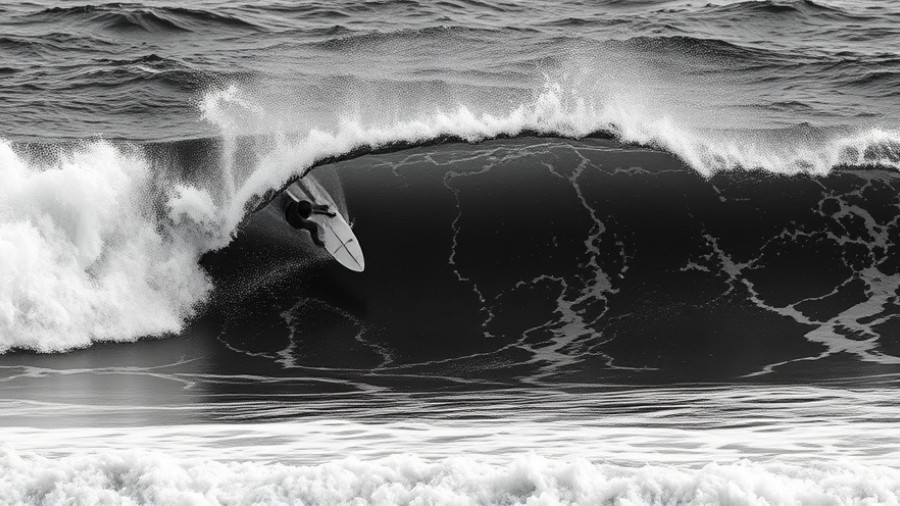
Is Surfing Safe? Understanding the Risks and Rewards
Surfing is not just a hobby; it's a way of life for many. However, there's a lingering question that often floats around in the minds of both experienced surfers and newcomers: Is surfing safe? In the video titled Is surfing safe?, the safety concerns surrounding this exhilarating sport are brought to light, highlighting the need for awareness about potential risks and how to mitigate them.
In the video Is surfing safe?, the safety concerns surrounding this exhilarating sport are highlighted, prompting us to delve deeper into the risks and awareness that every surfer should consider.
Historical Context: The Evolution of Surf Safety
The surfing culture has its roots deeply embedded in Hawaiian traditions, where it was not only a sport but a highly respected art form. As surfing gained popularity worldwide, it also evolved in terms of safety protocols. Early surfers relied on instinct and camaraderie to navigate the waves. In contrast, today's surfing community has access to more advanced safety equipment, educational resources, and a growing body of knowledge on oceanic conditions. Understanding this history gives us perspective on how safety in surfing has progressed, transforming it from a risky endeavor into a regulated sport that values the well-being of its participants.
The Social Connection: Building Community through Safety Awareness
Surfing brings people together, creating a vibrant community that fosters friendship and shared experiences. However, it's essential to connect safety awareness with this community ethos. Surf clubs and organizations often organize workshops to educate surfers about ocean safety, rip currents, and injury prevention. By prioritizing safety, surfers not only protect themselves but also the integrity of the community. A collective understanding of these dangers means that surfers can look out for one another, ensuring a safer environment for everyone to enjoy the ocean.
Facing the Wave: Understanding Common Risks
When we ask, 'Is surfing safe?' it's crucial to tackle the risks head-on. Common dangers include:
- Rip Currents: These powerful currents can catch even seasoned surfers off guard, leading to dangerous situations if one isn’t prepared.
- Injuries: Wipeouts can lead to cuts, bruises, and in some cases, more severe injuries from board collisions.
- Wildlife Encounters: While rare, encounters with marine life such as jellyfish or sharks can happen, underscoring the importance of understanding local wildlife.
Understanding these risks can empower surfers to make informed decisions about when and where to catch waves. Awareness is the first step in creating a safe surfing experience.
Coping Strategies: How to Surf Safely
So, how can surfers engage in this thrilling sport while prioritizing safety? Here are some practical tips:
- Know Your Limits: Assess your skill level before heading into the water. Challenge yourself but avoid pushing beyond your capabilities.
- Educate Yourself: Take safety courses offered by local surf schools or clubs. Understanding techniques for dealing with rip currents and navigating waves can save lives.
- Surf with Friends: Always have a buddy in the water. This not only enhances the experience but also ensures help is nearby in case of an emergency.
The Beauty of Surf Culture: A Community’s Responsibility
The surf culture embodies a spirit of respect, freedom, and unity with nature. With this comes responsibility; surfers must not only safeguard themselves but also their peers. Engaging newcomers in discussions about safety fosters a culture of awareness and care. Whether you’re riding your first wave or the hundredth, the safety of the community and its members should be paramount. Embracing this mindset strengthens the bond among surfers and enhances everyone's experience.
Future Trends: Innovations in Surf Safety
As technology advances, so does the evolution of safety in surfing. From wearable devices that monitor heart rates and ocean conditions to surfboards equipped with safety features, the future looks promising. Innovators are recognizing the importance of blending enjoyment with security in surfing. These advancements aim to create a safer ocean experience while keeping the thrill of catching waves intact.
Taking Action: Be a Responsible Surfer
Ultimately, we all play a role in surfing's safety landscape. If you’re passionate about surfing—or simply intrigued by the ocean—commit to understanding its risks and advocating for safe practices. Get involved with local surf organizations, attend safety workshops, or even just spread the word amongst friends. As a community, our collective efforts can make surfing a safer and more enjoyable experience for everyone.
We encourage you: the next time you paddle out, take a moment to reflect on your own safety as well as that of others around you. Because the ocean is a place meant for joy, but that joy thrives on awareness and safety.
 Add Row
Add Row  Add
Add 




Write A Comment